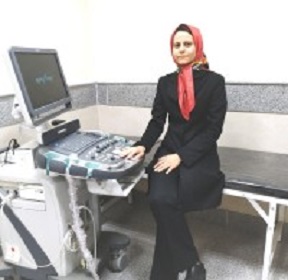Speakers
Taherah Mohammadabadi
University of Khuzestan IranTitle: How camel milk as a unique superfood is effective on Diabetes and Cardiovascular issues?
Abstract:
Camel milk is considered as a superfood with medicinal values. Camel milk has high amount of vitamin C, immunoglobulins and protective enzymes like lactoferrin, peptidoglycan recognition protein, lactoperoxidase and lysozyme. Furthermore, lactic acid bacteria of camel milk as strong probiotic are important for the gut health and function. Smaller size of nanobodies of camel milk prevent food allergy and enhance the immune system and inflammations. Camel milk contains insulin like proteins, which does not form coagulum in the acidic condition of stomach and may be an effective alternative for insulin to treat type 1 and 2 and gestational diabetes. Camel milk may prepare about 60% of the insulin in diabetic patients and reduce blood sugar and required insulin dose about 30–35% in type 1 diabetes patients. Raw camel milk has immune- modulatory effects on beta-cells of the pancreas, increase insulin secretion, reduces required insulin and insulin resistance and improves the glycaemic control in type 1 diabetes patients. Camel milk is effective on cholesterol content and cardiovascular diseases. Probiotic bacteria of camel milk may interfere with cholesterol absorption from the intestine by de conjugating bile salts and preventing reabsorption. Hypocholesterolaemia peptides have been resulted in cholesterol reduction by binding to cholesterol or reducing the micellar solubility of cholesterol and inhibiting cholesterol absorption. Lactoferrin, immunoglobulins and antioxidants of camel milk led to improve cardiovascular challenge in type 1 and 2 diabetes. Using of camel milk for 6 months reduced LDL and triacylglycerol’s in type 1 diabetic cases. Reduction of 1% in cholesterol reduces the risk of cardiovascular diseases by 2–3%. Therefore, camel milk is not only food, but also it is recommended as miraculous superfood for diabetes, heart health and cardiovascular disorders.
Biography:
Taherah Mohammadabadi finished her PhD in Iran and Australia and has been as a researcher at University of Queensland, Australia; she has attended and presented her works in different conferences in some countries. She is working as academic member, researcher and teacher since 11 years ago in Faculty of Animal Science and Food Technology, Agricultural Sciences and Natural Resources University, Iran. She has been as supervisor for 10 PhD students and more than 30 Msc students. She has over 200 published publications, conferences presentations, and scientific projects; Also, some books on phytochemicals and microbes, bioactive components in the livestock milk; milk lactoferrin and health, anti-diabetes properties of camel milk. She is member of the editorial board and reviewer of some international and national journals.
Furkan khurshid
Adesh university IndiaTitle: ECG in myocardial infraction – Clinical approach
Abstract:
Ischemia occurs when part of the heart muscle, the myocardium, is deprived of oxygen and nutrients. Common causes of ischemia are:
- Narrowing or obstruction of a coronary artery.
- A rapid arrhythmia, causing an imbalance in supply and demand for energy.
A short period of ischemia causes reversible effects: The heart cells will be able to recover. When the episode of ischemia lasts for a longer period of time, heart muscle cells die. This is called a heart attack or myocardial infarction. That is why it is critical to recognize ischemia on the ECG in an early stage.
Signs and symptoms of myocardial ischemia:
- Crushing pain on the chest (angina pectoris), behind the sternum, often radiating to the lower jaw or the left arm
- Fear of dying
- Nausea
- Shock (manifesting as paleness, low blood pressure, fast weak pulse) shock
- Rhythm disturbances (in particular, increasing prevalence of ventricular ectopia, ventricular tachycardia, AV block)
Diagnosis of MI on ECG:
- The diagnosis of acute myocardial infarction is not only based on the ECG.
- Elevated blood levels of cardiac enzymes (CKMB or Troponin T) AND
- One of the following criteria is met: a. The patient has typical complaints,
- b. The ECG shows ST elevation or depression.
- c. pathological Q waves develop on the ECG
- d. A coronary intervention had been performed (such as stent placement)
- So the detection of elevated serum cardiac enzymes is more important than ECG changes. However, the cardiac enzymes can only be detected in the serum 5-7 hours after the onset of the myocardial infarction. So, especially in the first few hours after the myocardial infarction, the ECG can be crucial.
ST-elevation
New ST elevation at the J-point in two contiguous leads with the cut-off points: ≥0.2 mV in men or ≥ 0.15 mV in women in leads V2–V3 and/or ≥ 0.1 mV in other leads.
ST depression and T-wave changes.
New horizontal or down-sloping ST depression >0.05 mV in two contiguous leads; and/or T inversion ≥0.1 mVin two contiguous leads with prominent R-wave or R/S ratio ≥ 1
Biography:
Furkan Khurshid is currently pursuing a bachelor's in cardiac care technology from Adesh medical University Bathinda, Punjab. He has numerous international and national certifications.
Farbod Hatami
Birjand University, Iran IranTitle: Chest pain in a young male with carbon monoxide poisoning and substance abuse
Abstract:
Myocardial infarction is a rare entity as a consequence of carbon monoxide poisoning in a healthy young adult. We reported a 29-year-old man who presented with constant chest pain after a night he had smoked tobacco and consumed smokeless tobacco in the setting of carbon monoxide poisoning. An electrocardiogram showed ST-segment elevation and echocardiography revealed akinesia. Cardiac markers were elevated. The thrombolytic therapy was along with successful outcomes in this case. We believe the case and the discussion done could shed light on the management of such individuals in the emergency department.
Biography:
Farbod Hatami is experienced as a medical doctor, he is a critical thinker with experience in designing research protocols, project management, data collection, and assisting the research teams in experimental studies, clinical trials, case-control, cohort, and population-based studies. He has experienced a research assistant role by which mastered laboratory techniques, statistics, epidemiology, and public health systems.
Poster
Pavithra Rajam
Saveetha College of Allied Health Sciences IndiaTitle: Atrial septal defect associated with partial anomalous pulmonary vein connection
Abstract:
INTRODUCTION:
Atrial septal defect (ASD) is a form of congenital heart defect that enables blood flow between two ompartments of the heart called the left and right atria. Normally, the right and left atria are separated by a septum called the interatrial septum. If this septum is defective or absent, then oxygen-rich blood can flow directly from the left side of the heart to mix with the oxygen-poor blood in the right side of the heart, or vice versa.Surgical repair of ASD is a well-established procedure and is very safe, with a negligible mortality rate PAPVCs may be isolated or associated with ASDs, and they are a typical component of sinus venosus defects. In PAPVR, an abnormal connection of veins sends blood into other blood vessels and into the upper right heart chamber (right atrium), where it mixes with oxygen-poor blood. As a result, extra oxygen-rich blood flows back to the lungs.
TYPES OF ASD:
- Ostium Secundum - located in the center of the atrial septum
- Ostium Primum - located near the lower portion of the atrial septum, may be associated with defects in the mitral and tricuspid valve
- Sinus Venosus - located near the top of the atrial septum and frequently associated with
- abnormal connection of the right pulmonary vein(s) to the right atrium instead to the left
- atrium
- Patent foramen ovale (PFO) is a hole between the left and right atria (upper chambers) of
- the heart. This hole exists in everyone before birth, but most often closes shortly after being
- born. PFO is what the hole is called when it fails to close naturally after a baby is born.
CASE REPORT:
A 31 year old man who came to the hospital for cardiac evaluation was diagnosed with SVC type ASD and PAPVC. He had a medical history of Hypertension and diabetes mellitus for the past three months . His vital signs were a systemic blood pressure of 110/70 mm Hg ,pulse rate of 88 beats/minute and Respiratory rate of 24 cycles/min.Transesophageal echo was done which showed SVC type ASD (2.6cm).The surgical indication and strategy were admissible.The surgical approach was via median sternotomy . Aorto Bicaval cannulation was established. CPB and Cardiac arrest was applied. Pericardial patch harvested and treated with Glutaraldehyde . Incision made at the level of RA and extended laterally into SVC. Defect was present at SVC level and PAPVC drainage present close to the defect. ASD closer with redirection of PAPVC into LA. SVC augmented with pericardial patch.
ASD CLOSURE AND PULMONARY VEIN RECHANNELING:
The right atrium can be opened longitudinally or transversely and small ASDs or PFOs can be closed by direct suture. Larger defects usually require a patch repair. The traditional approach through a median ternotomy and central cannulation has become exceedingly safe, simple and reproducible.Pulmonary vein Rechanneling ,where pulmonary vein is cross channeled from right atrium to left atrium.Therefore, advancements in this operation have related to surgical access, in an attempt to reduce trauma and hasten recovery.
Biography:
Pavithra Rajam is a student pursuing her bachelor degree in cardiovascular perfusion technology at Saveetha college of Allied Health Sciences, who is interested in academic research activities, attending webinars and exploring knowledge. She relishes the connections found in medicine, how things learned in one area can aid in coming up with a solution in another.





